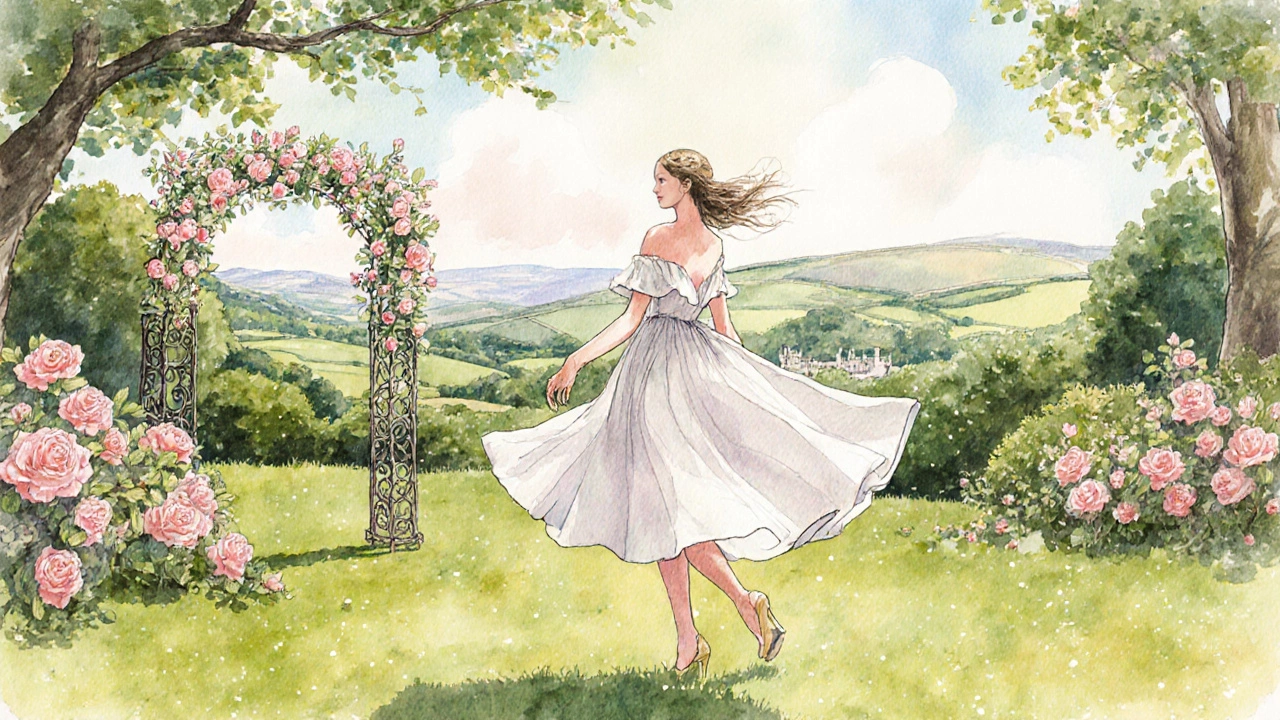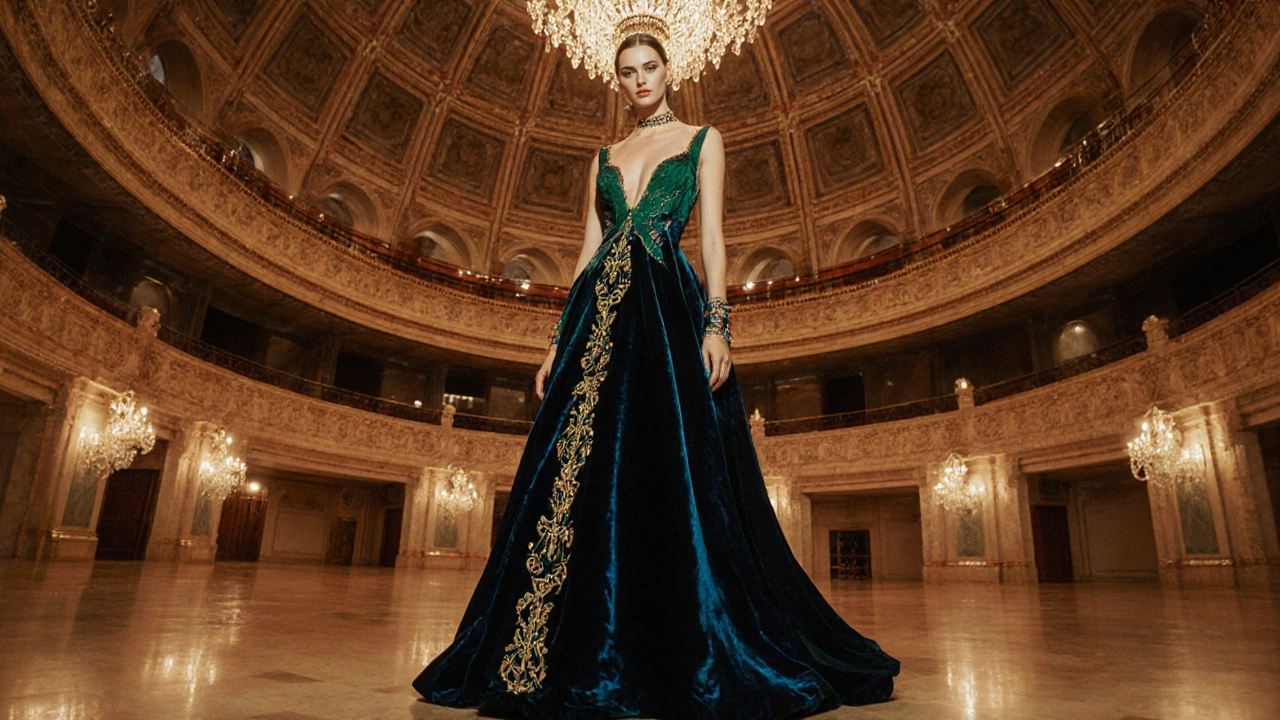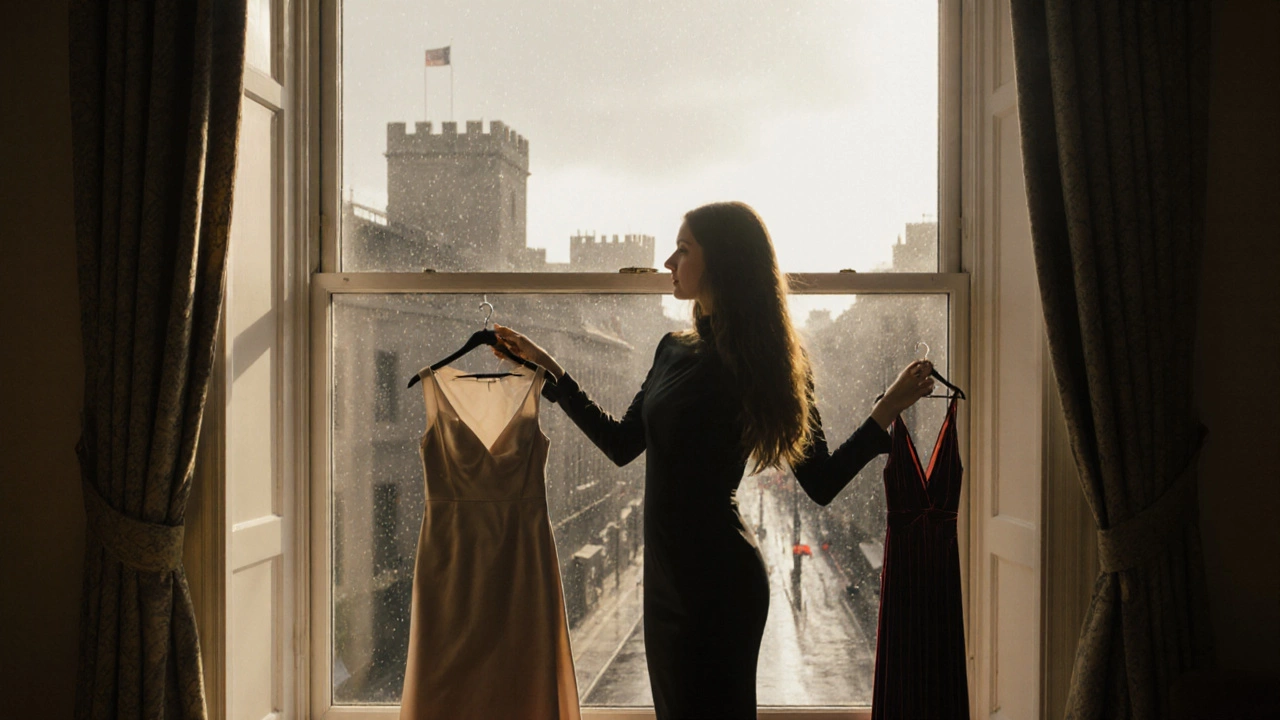Irish Formal Dress Length Calculator
Find the perfect dress length for your Irish event based on dress code, venue, season, and activity. The calculator uses guidelines from Irish event traditions and weather considerations.
Your Recommendation
When you're heading to a formal affair in Ireland-whether it's a wedding at Dublin Castle or the gala at the National Concert Hall-choosing the right dress length can feel like a high‑stakes decision. The good news is that the Irish social calendar offers plenty of clues, from the rain‑slicked streets of Grafton Street to the breezy lawns of the Dublin Horse Show.
formal dresses in Ireland vary between sleek, knee‑length cocktail looks and sweeping floor‑sweeping gowns. Understanding how climate, venue, and Irish tradition influence that choice will help you feel confident, comfortable, and stylish.
Understanding Irish Formal Dress Codes
Irish event etiquette has evolved, but a few core ideas remain steady. Most invitations will specify a dress code-"black tie", "semi‑formal", or "cocktail"-and each carries an implicit expectation for silhouette and length.
- Black‑tie (full evening): Floor‑length gowns are the norm, especially for historic venues like Dublin Castle or the National Concert Hall. Expect luxurious fabrics such as Irish silk or velvet.
- Semi‑formal (black‑tie optional): Knee‑to‑mid‑calf dresses work well. Think of a stylish cocktail dress that still respects the event’s elegance.
- Cocktail: Shorter, above‑the‑knee dresses are acceptable, but keep it classy. A hem that shows a hint of leg is fine, as long as the overall look feels polished.
In coastal cities like Cork or Galway, where the wind can gust up the River Lee or stroll along the Spanish Arch, the practicality of your dress length becomes even more important.
Short Dresses: When They Shine
Shorter dresses-usually ending above the knee or at mid‑calf-are perfect for events that blend formality with a lively atmosphere. Here’s why they work well in the Irish context:
- Weather flexibility: A shorter hem reduces the chance of fabric catching the wind during a May wedding at a countryside estate.
- Mobility: If you’ll be dancing at the Galway Arts Festival or moving between venue rooms, a shorter dress lets you glide across the floor without tripping over hem.
- Modern vibe: Irish designers such as Miriam Houlahan often showcase contemporary silhouettes that flirt with tradition while staying fresh.
Local shopping tip: Brown Thomas on Grafton Street carries a curated selection of short cocktail dresses from both Irish and international labels. Look for pieces in breathable fabrics like linen‑silk blends-ideal for a summer garden party at Castletown House.
Long Dresses: Classic Irish Elegance
Floor‑length gowns remain the gold standard for black‑tie affairs and many traditional weddings across the Republic. Their appeal lies in the drama and respect for historic settings.
- Venue harmony: A sweeping gown mirrors the grandeur of stone arches and chandeliers at the Dublin Castle State Apartments.
- Fabric weight: Heavier fabrics such as Irish wool crepe or velvet keep you warm during a November evening in Dublin, where temperatures can dip below 10°C.
- Timelessness: Long gowns rarely feel out‑of‑style, making them a safe investment for multiple events, from a senior’s anniversary gala to a corporate awards dinner.
If you’re hunting for a floor‑sweeping piece, check out the Irish silk collection at the boutique of Dublin’s Arnotts. They often feature hand‑embroidered Celtic motifs that add a subtle Irish flair without overwhelming the silhouette.

Choosing the Right Length for Your Event
Here’s a quick decision tree you can run through while standing in front of your wardrobe mirror:
- What’s the exact dress code on the invitation? If it says "black tie," lean toward floor‑length. If it says "cocktail," a shorter dress is safe.
- Where is the venue? Indoor ballrooms (e.g., The Shelbourne Hotel) accommodate long gowns easily. Outdoor settings (e.g., the grounds of Kilkea Castle) may favor a shorter hem to avoid tripping on grass.
- What’s the season? Summer events (June‑August) often benefit from lighter fabrics and shorter cuts, while autumn/winter calls for richer fabrics and longer lengths.
- Do you plan to dance a lot? A dress that swishes lightly (mid‑calf) offers balance between elegance and movement.
Using this checklist helps you avoid the common mistake of over‑ or under‑dressing for an Irish soirée.
Local Sources and Tailoring Options
While major retailers stock ready‑to‑wear pieces, Ireland’s bespoke tailoring scene lets you fine‑tune length and fit. Here are a few reputable options:
- DeVries Tailors (Dublin): Known for hand‑stitched seam finishes on evening gowns. They’ll shorten a floor‑length dress by a few inches without compromising the drape.
- McManus & Co. (Cork): Specializes in custom silk fabrics sourced from the Irish textile cooperative in County Donegal.
- Rachel’s Boutique (Galway): Offers a curated “Irish Designers” line featuring designers like Miriam Houlahan and Ellen McCullough. Their dresses come in both short cocktail and long gala cuts.
When you order a custom piece, ask for a “dress test” (a quick fitting) and confirm the hem length in both shoes you plan to wear-Irish events often involve polished brogues or heeled clogs.

Quick Checklist for Your Irish Formal Dress
- Confirm dress code on the invitation.
- Match length to venue (indoor vs outdoor).
- Consider season and typical Irish weather.
- Choose fabrics that suit temperature and wind (silk, wool crepe, lace).
- Plan accessories: a structured clutch, modest jewellery, and shoes with enough grip for slippery stone floors.
- Arrange a final fitting with an Irish tailor at least two weeks before the event.
- Pack a discreet safety pin and a wind‑proof overlay (e.g., a sleek shawl) for unpredictable evenings.
Comparison Table: Short vs Long Formal Dresses
| Aspect | Short Dress (above knee‑mid calf) | Long Dress (floor‑length) |
|---|---|---|
| Best for | Cocktail parties, garden receptions, summer festivals | Black‑tie galas, historic venues, winter weddings |
| Weather suitability | Wind‑friendly, lighter fabrics | Provides extra warmth, can be layered with shawls |
| Mobility | Easier movement on dance floors and uneven grounds | Elegant sway, but may catch on stairs or grass |
| Traditional perception | Modern, youthful vibe | Classic, formal elegance |
| Typical price range in Ireland | €150‑€500 (retail) | €400‑€1500 (designer or bespoke) |
Frequently Asked Questions
Can I wear a short dress to a black‑tie wedding in Dublin?
Generally, black‑tie events expect floor‑length gowns. If the invitation specifically says "black‑tie optional" you might get away with a sophisticated tea‑length dress, but it’s safest to stick with a full‑length gown.
What Irish fabrics work best for long evening gowns?
Irish silk, Donegal tweed with a silk backing, and Irish wool crepe are popular choices. They drape well, provide warmth, and add a subtle local touch.
Where can I get a quick alteration in Belfast before a weekend event?
The Tailor’s Studio on Castle Street offers same‑day hemming for most cocktail dresses. Call ahead and bring your shoes for accurate length.
Is it okay to wear heels on a grassy venue like Kilkea Castle?
Opt for block‑heeled shoes or a stylish low‑profile wedge. They give you height without sinking into the grass, which is especially important during an Irish drizzle.
How do I accessorise a short cocktail dress for a St. Patrick’s Day gala?
Pair the dress with a sleek metallic clutch, a statement necklace featuring Celtic knots, and a pair of classic Irish brogues or heeled loafers. A lightweight cashmere wrap adds warmth for an evening chill.
